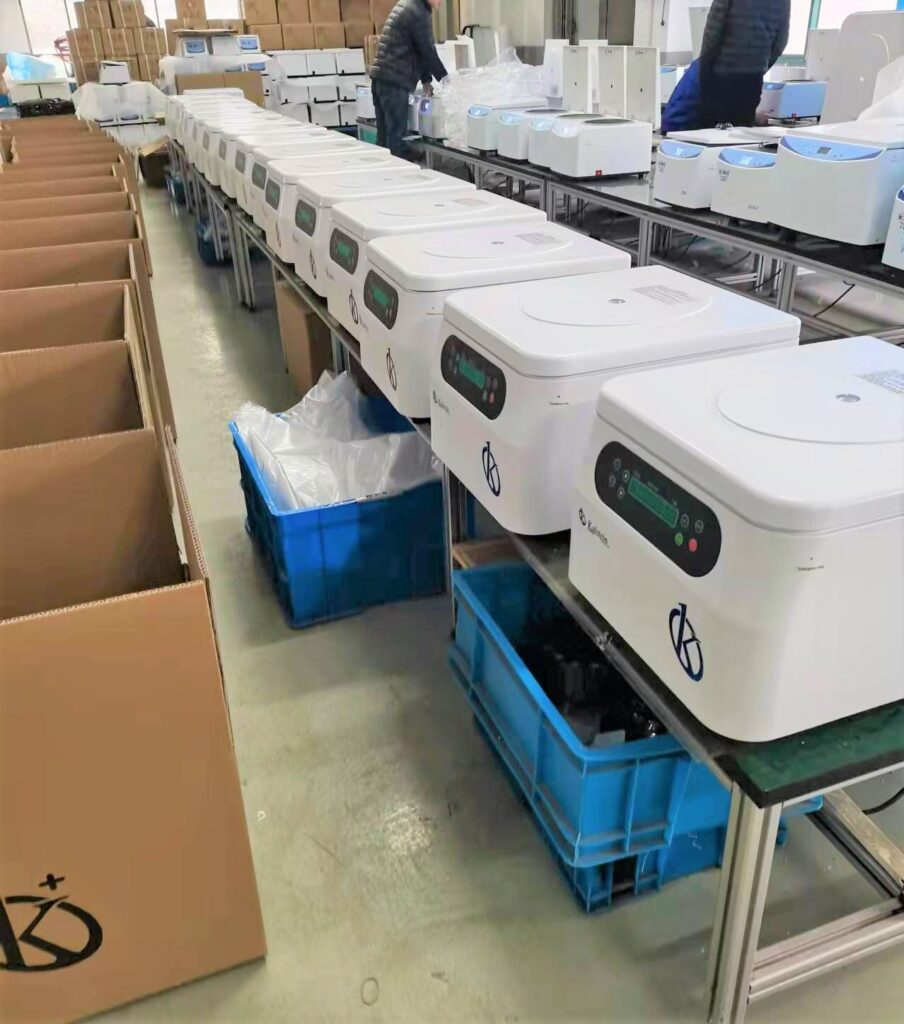For an optimal and safe operation of laboratory centrifuges, it is always necessary to perform the corresponding maintenance, which is generally recommended every certain period of time. One of the essential points to take into account is the prolonged exposure of centrifuges to substances, such as salts or some chemicals that can be very aggressive; These will bring adverse results for the performance of the equipment, which is why periodic maintenance will help prevent deterioration, prolong the useful life of the equipment and prevent the appearance of corrosion.
The maintenance of centrifuges should be taken as a constant task, if you want to avoid unfavorable circumstances, because a prolonged exposure to chemicals can cause corrosion, which, if ignored, will create small holes. For this, the condition of the rotor surface must be taken into account. If the latter has cracks or scratches, it is much simpler that corrosion is formed and that serious consequences occur in the spinning process, also can end up damaging your equipment.
However, the chemicals that are regularly exposed to the centrifugation processes are usually very aggressive so they can deteriorate your centrifuge. It is suggested that from time to time an inspection be made to the rotors to verify that there is no waste or corrosion; such inspection can be weekly or monthly depending on the use that is given to the centrifuge. In addition, when the containers or rotors are damaged it is very important to replace them to avoid collisions in the main rotor. It is highly recommended to follow all the necessary maintenance and cleaning processes thoroughly, more if you do not know where to start.
In case of contamination by high-risk substances
(for example, some aggressive chemical reagents or with possible biological risks and radioactive reagents), adequate protection should be used, such as gloves, lab coat and protective goggles. For cleaning in such situations, the first step is to turn off the centrifuge, then open the lid and remove the containers and the rotor. In the case of refrigerated laboratory centrifuges it is necessary to leave the lid open to thaw the ice that is lodged in the rotor chamber. When it is equipped with a water collection tray, remove it, clean it and empty it completely. Subsequently, a wet cloth should be passed over the rotor chamber. It should be added that the external part of the centrifuge and the rotor chamber must be cleaned constantly with damp cloths and neutral detergents.
When a glass material is broken
first it is necessary to extinguish it and then they must make sure that the rotor has stopped its march completely before beginning; for this procedure it is also necessary to use protective equipment such as a lab coat, protective glasses and gloves. Once the rotor run has ceased, all parts of the broken glass must be carefully removed with the lid open. It is important to note that you should never put your hand to avoid accidents, more in case they occur, the blood should be absorbed with a paper towel or gauze, then the material should be sealed in a bag for biological waste, so that can be disposed of safely.
To continue with the cleaning of laboratory centrifuges
use another cloth coated with neutral cleaning agents and then pass it over the dirty parts, which will be used to disinfect it. If it is very dirty, you can remove the rotor, containers, lids, and other components that are easy to remove. With this you will have better access to cleaning those areas that are difficult to reach.
To clean the rotor tubes and holes use a special brush for test tubes
which must have bristles with non-metallic tip. When the centrifuges are in disuse it is necessary to keep them covered tightly and store them, and finally, it is suggested that they never use high energy radiation on these equipment.
At Kalstein we offer centrifuges of the highest technology. That’s why we invite you to take a look at our centrifuges available HERE

